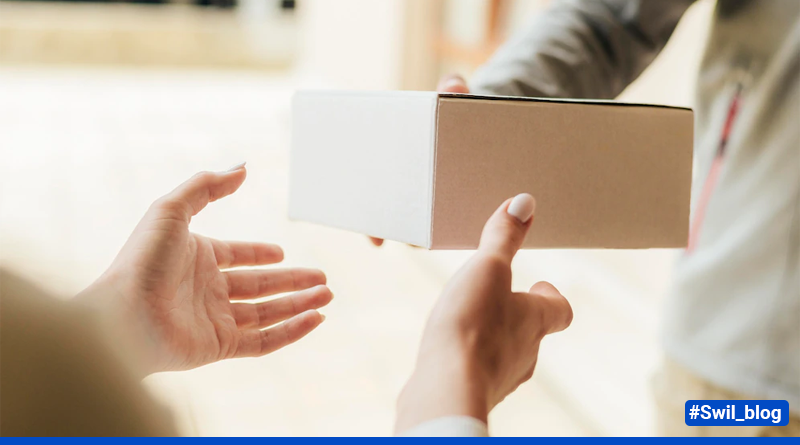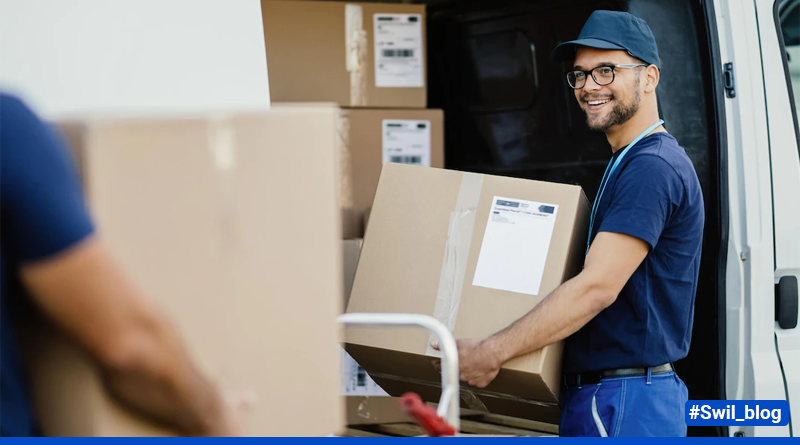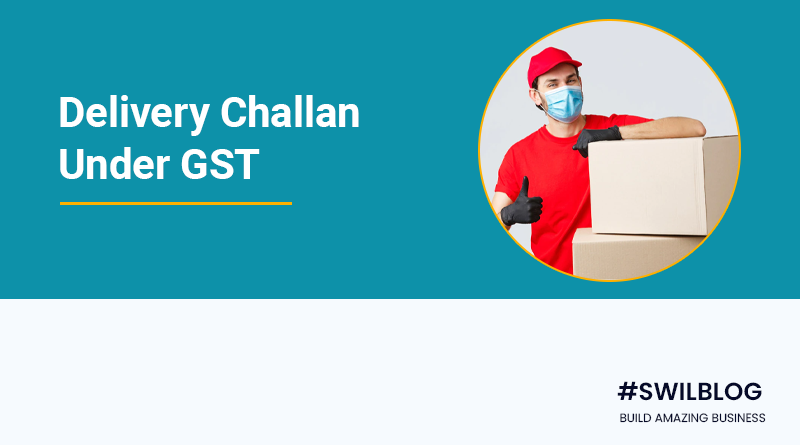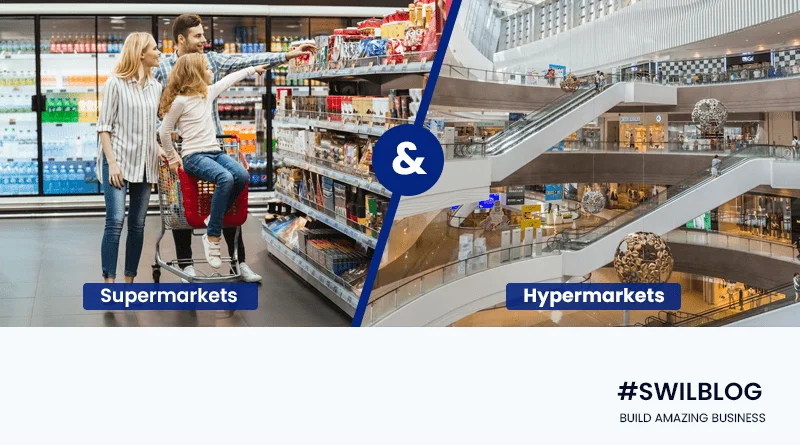Introduction
Transporting goods can be challenging as they can be lost due to theft or spills. Documents such as packing slips help you track and verify a particular shipment’s contents.
Challan for delivery is a useful tool for safe transportation of goods. It helps you track and confirm delivery details. For those unfamiliar with this term, here are the meanings, formats, and templates for Delivery Challan.
Article Content-
- Meaning of Delivery Challan
- Format and Key Components of a Delivery Challan
- Businesses that require a Delivery Challan
- Particulars of Delivery Challan
- Advantages of a Delivery Challan
- When delivery challan is issued?
- Important GST rules on Delivery Challan
- Differences between Tax invoice, Delivery Challan, Purchase Order and Bill
- FAQs (Frequently Asked Questions)
- How SWIL software helps your business with its Delivery Challan and GST needs
Meaning of Delivery Challan

Delivery Challan is a formal document required to transfer goods from one location to another. This Delivery Challan accompanies the item to be delivered. Most of the information on this delivery note is related to the products delivered. It contains details such as the number of items marked for delivery, the buyer’s address, and the delivery address.
Three main types of copies are made for Delivery Challans. These are as follows:
- Original challan issued to the buyer
- A duplicate copy is given to the transporter
- A third copy is given to the seller
A Delivery Challan, also known as a delivery memo or shipping Challan. It is a document that contains information about the delivered item, such as quantity, shape & specifications. Recipient information and delivery location and time are included in this query. The main purpose of Delivery Challan is to ease the movement of goods. It should be emphasized that the Challan for delivery is carried with the object to be transported. This is an important document that is needed on a daily basis in almost every business transaction.
Format and Key Components of a Delivery Challan
Delivery Challan must be consecutively numbered in one or more series and must be 16 characters or less. The following information must be provided in all Delivery Challan formats.
To generate a Delivery Challan, you need to include the following details on your document.
- The Date and number of the challan
- The serial number of the challan
- The name and the address of the registered vendor
- The name and identity of the buyer with specifications
- The Quantity and the description of the goods. This includes their HSN code
- The Name and address of the transporter, also known as a consigner
- The Place of delivery of goods
- The concerned persons Signature
- Mention the exact information of the items. Such as their taxable value, description, and HSN number, to create an error-free challan.
It should be noted that the delivery challan serial number is vital. This is so because it facilitates in identifying and making future references smoother. Also, if the individual receiving the items is not registered, the business’s address must be exclusively stated in the delivery challan.
Businesses that require a Delivery Challan
Delivery Challan is useful in a variety of situations, including the transfer of unsold items. Below are some examples of companies that require these Challenges under GST:
- Companies that are engaged in the exchange of goods. These are often referred to as trading companies.
- Owners of many warehouses. Those in which goods are exchanged on a regular basis
- Companies involved in the delivery or distribution of goods.
- Companies engaged in product wholesale.
- A Manufacturing unit
Particulars of Delivery Challan
The delivery challan must have serially numbered and include the information listed below:
- The date and delivery challan number.
- The date and delivery challan number.
- The consignee’s name, address, and GSTIN, or Unique Identity Number, if registered.
- The product description and the Harmonized System of Nomenclature (HSN) code.
- quantity (provisional, where the exact quantity being supplied is not known).
- Taxable value; the tax rate and the amount of the tax, whether it be a federal, state, integrated, union territory, or cess when the transportation is for the supply of goods to the consignee.
- The supply location, in the event of an interstate movement; and
- Tthe authorised person’s signature.
Advantages of a Delivery Challan

Delivery Challan is a Dispatch Challan. It is used when goods are shipped before the actual delivery. It consists of details of the delivered item. These include quantity, description, delivery location and time, consignee’s name and address. Some of the benefits and uses of a Delivery Challan are:
1. Proof of Delivery
Delivery Challan will be sent along with the delivered goods. In this challan, all information about the goods is included. This helps the recipient see which items have been delivered and match them with the order. A copy of the delivery note received by Customer shall serve as proof of delivery.
2. Used when goods are shipped on a permit basis
This is useful if the item is sent to the customer’s location for sale or return and no actual invoice is created. In this case, a delivery date will be issued at the time of delivery.
3. Use if you don’t need an E-Way invoice
As per Rule 55A of the CGST Regulations, if you don’t need an E-Way invoice and no tax invoice or tax invoice has been created, send the Delivery Challan with the goods.
4. Goods delivered by multiple freight
Goods may be shipped in multiple freight in a partially or completely disassembled state. In such cases, the supplier issues an invoice prior to the first delivery and uses an invoice detailing the original invoice for each subsequent delivery.
5. Transporting Goods outside India for Display or Export
Such transport is not considered delivery or export. No pledge (LUT) or guarantee is required as there is no export. These items will be delivered and shipped along with Delivery Challan.
When delivery challan is issued?
The following are the circumstances when a Delivery Challan is issued:
- When goods are shipped on a sale or return basis.
- Where goods are shipped for work assignments. For example, print a newspaper.
- When shipping goods for reasons other than supply. For example, move goods from an old warehouse to a new warehouse.
- If you do not know the quantity of the delivered goods.
- The quantity is unknown at the time of delivery of LPG from the supplier’s location.
- The shipment is a work of art delivered to the gallery.
- When goods are shipped abroad for an event such as an exhibition, trade fair, or advertising purpose. Goods cannot be described as “delivery” or “export” as they are for a specific short-term purpose and are returned.
- If the seller is unable to issue a tax invoice upon receipt of the item.
Important GST rules on Delivery Challan
If a registered taxpayer transports goods from one delivery location to another as per Article 31 of the CGST Act, a tax invoice must be issued. Information about the amount of the invoice, the description of the goods supplied, the quantity, the charges, the amount, and the applicable GST is part of the invoice. Certain cases occur when the shipment does not result in a sale, and thus a tax invoice is not issued. In such cases, a tax invoice will be issued instead of the tax invoice. Delivery Challan is a document that allows you to move goods from one location to another. Also known as shipping or delivery notes.
As per Rule 55 (2) of the CGST Rules, Delivery Challan must be issued in three copies-
- For the buyer, it should be marked as “Original”
- For the transporter, it should be marked as “Duplicate”
- For the seller, it should be marked as “Triplicate”
Differences between Tax invoice, Delivery Challan, Purchase Order and Bill
| Tax Invoice | Delivery Challan |
|---|---|
| Includes proof of ownership and liability. | Proof of ownership or liability is not included. |
| Shows the actual value of the item. | Indicates that the customer has confirmed receipt of the goods. |
| Evidence that a sales transaction has taken place. | It doesn’t necessarily imply that a sales transaction has taken place. |
| Shows the actual value of the goods, including all applicable taxes. | Shows the price of a particular product, but does not show the full price of the sale. |
| Purchase Order | Invoice |
|---|---|
| Order confirmation sent by buyer to seller. | Supplier to Buyer Payment Reminder |
| Generated when the buyer places an order. | Generated after the order is fulfilled |
| Defines purchase terms. | Define sales confirmation |
| Prevents overstock of inventory | Prevents double and overpayment |
| Facilitates inventory tracking | Useful for expense and tax calculations |
FAQs (Frequently Asked Questions)
What exactly is a delivery challan?
When goods are transferred from one location to another but no standard tax invoice is generated, delivery challans are the documents that are generated.
When is a delivery challan issued under the GST?
The following situations result in the issuance of a delivery challan: When a delivery of items in an unknown quantity.
When the delivered goods need additional work or modification.
When goods are transported for reasons other than retail.
The Central Board of Excise and Customs’ list of additional transactions (CBEC).
What number of copies do I need to create?
The preparer must create a total of three copies for every delivery challans that is created and issued. The copies bear the following labels:
The label “ORIGINAL FOR CONSIGNEE” must appear on the original copy.
The following duplicate must be marked “DUPLICATE FOR TRANSPORTER.”
The final version has to say “TRIPLICATE FOR CONSIGNOR” on it.
After delivery, can products be returned?
How SWIL software helps your business with its Delivery Challan and GST needs
SWIL software is an all-inclusive software solution that brings all the GST features you need under one roof. Its electronic billing solution should provide you with built-in analytics. It provides meaningful insights along with a graphical dashboard for trend analysis. In this way, the enterprise / tax accountant can perform all GST-related functions. These include invoice upload, GST filing, GST adjustment, e-way invoice, e-invoicing and so on.









